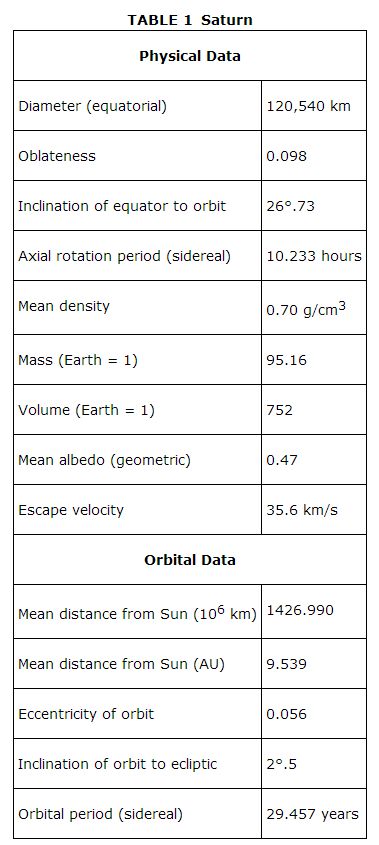Saturn, the second largest planet, is basically a smaller version of Jupiter, an obvious difference being the spectacular system of thousands of concentric, thin rings that encircle the planet. Being farther from the Sun, its outer atmosphere is cooler (95 K), and hence its cloud layers occur much deeper within its hazy atmosphere; its belts and bands thus appear washed out. Like Jupiter, its atmospheric composition is mostly hydrogen (80 percent) and helium (20 percent). Compared to Jupiter, helium appears depleted in Saturn, suggesting that convection is unable to keep the composition well mixed. The sinking of heavier helium into the planet's interior may be the source of the excess energy that the planet emits over and above the solar energy it absorbs. In its interior (see Figure ), hydrogen occurs mostly in its molecular form with a smaller metallic hydrogen zone near the center (and hence a weaker magnetic field). A region of solid ice around the core is more likely than for Jupiter, but at best, there is only a tiny iron‐silicate core for the overall density of the planet, which is only 0.7 g/cm 3. (See Table 1 for Saturn's physical and orbital data.)

Figure 1 The interior of Saturn.
